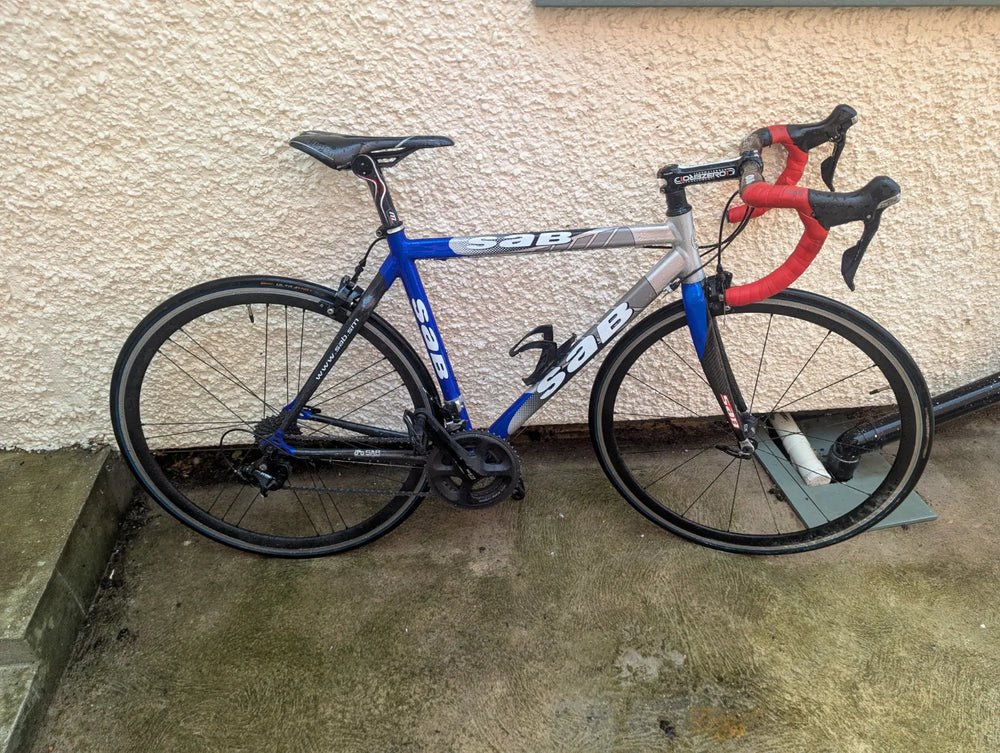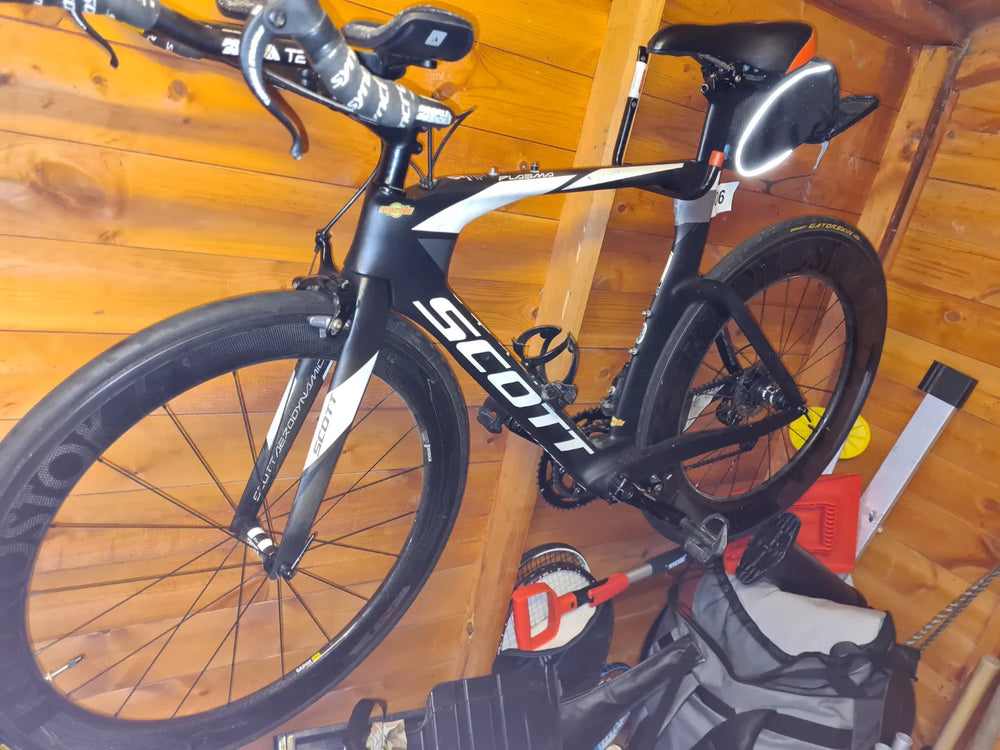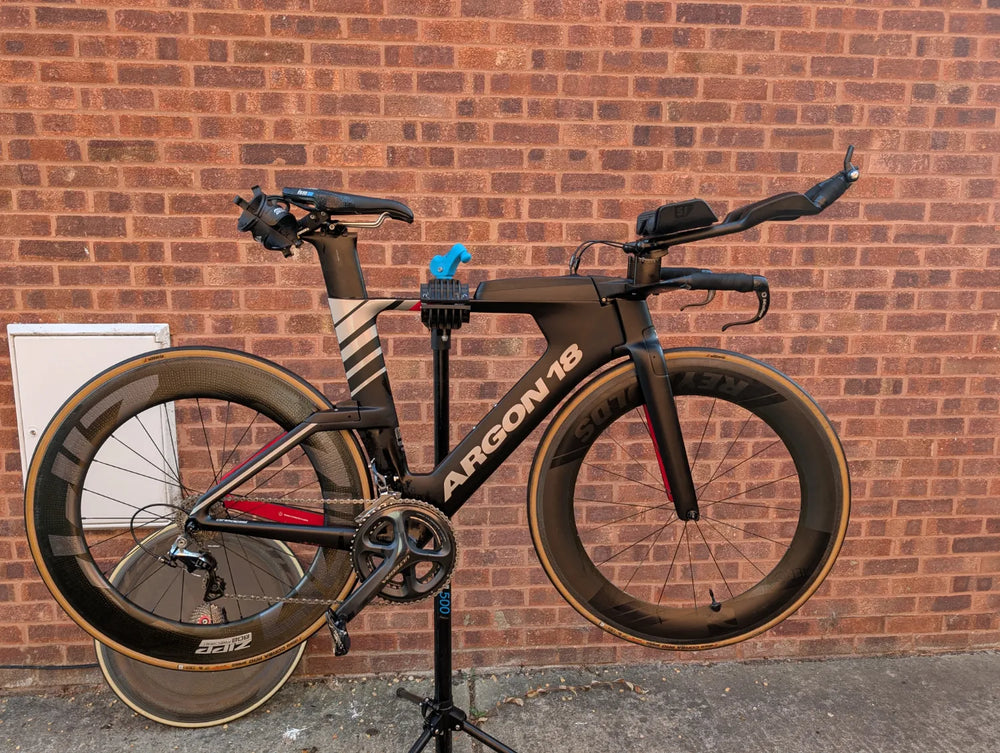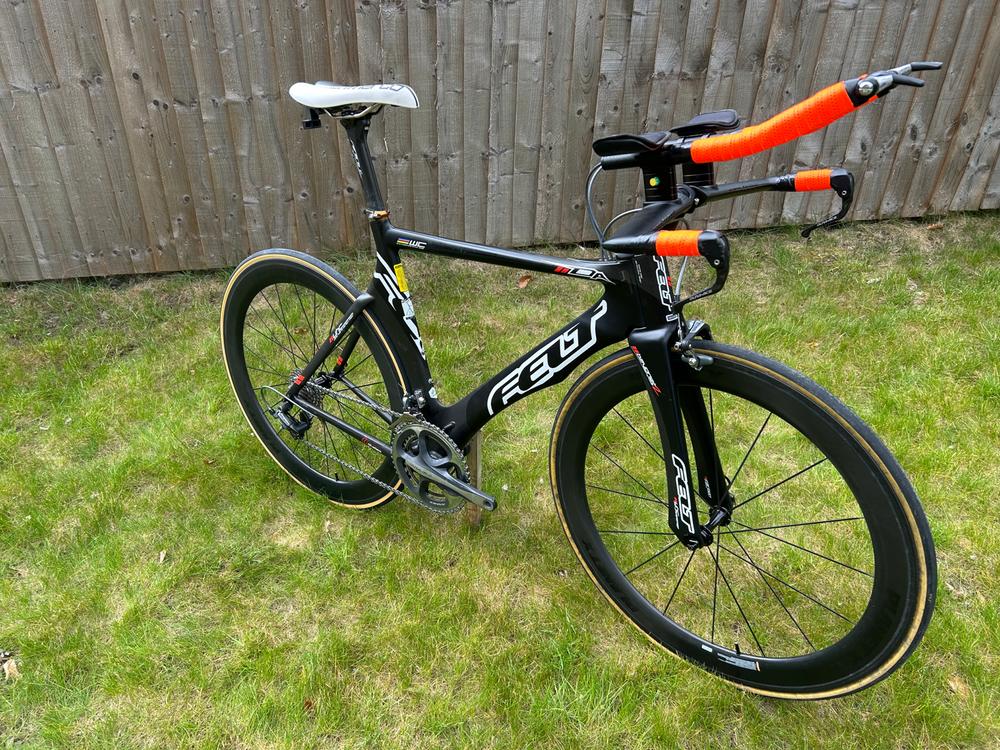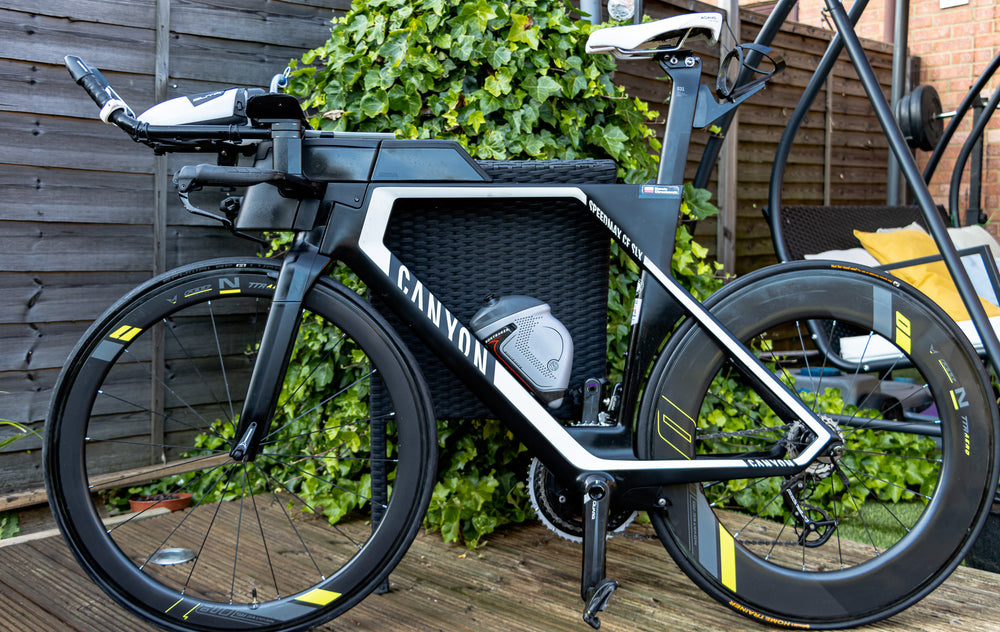Triathlon Road Bikes
Triathlon bikes are aerodynamic, light and efficient, helping you to get around fast and flat courses as quickly as possible. Check out our range of premium used triathlon bikes below.
The aerodynamic bikes for racing - triathlon bikes
Triathlon bikes, also known as time trial (TT) bikes or tri bikes, are specialised road bikes designed for triathlons. These bikes are optimized for speed, aerodynamics, and efficient power transfer, allowing triathletes to cover long distances while conserving energy.
Here are some key features and characteristics of triathlon bikes:
- Aerodynamic Design: Triathlon bikes feature a streamlined frame geometry and aerodynamic tube shapes to minimise wind resistance. The frame geometry typically includes a steeper seat tube angle, which positions the rider more forward over the bottom bracket, creating a more aerodynamic riding position.
- Integrated Aerobars: Triathlon bikes often come equipped with integrated aerobars, which allow the rider to assume a low and aerodynamic position by resting their forearms on padded extensions. This position reduces wind resistance and optimises power output.
- Aero Wheels: Triathlon bikes typically have deep-section or disc-shaped wheels designed to minimise air drag. These wheels are aerodynamically optimized and often feature fewer spokes and a higher rim profile.
- Time Trial Shifters: Triathlon bikes usually have bar-end or integrated shifters located at the end of the aerobars. This placement enables the rider to shift gears without moving their hands from the aerodynamic position.
- Triathlon-Specific Saddle: The saddle on a triathlon bike is designed to provide comfort and support while maintaining an aero position. These saddles often have a shorter nose and additional padding to accommodate the rider's forward position.
- Triathlon-Specific Frame Features: Triathlon bikes may include additional frame features to enhance performance. These can include internal cable routing for improved aerodynamics, storage compartments for nutrition and tools, and integrated hydration systems to keep the rider hydrated during the race.
- Aggressive Geometry: Triathlon bike geometry is more aggressive than traditional road bikes, with a steeper seat tube angle and shorter top tube. This positions the rider forward and lower, reducing frontal area and optimising aerodynamics.
- Time Trial-Specific Gearing: Triathlon bikes may have gearing optimised for time trial efforts. They often feature larger chainrings to maximize speed on flat and rolling terrain, and smaller rear cassettes with close gear ratios to provide a wide range of options for maintaining a consistent cadence.
Triathlon bikes are purpose-built for speed and aerodynamics, prioritising efficiency over comfort for the bike leg of a triathlon. They excel on flat and rolling courses, where aerodynamics play a crucial role. However, their aggressive riding position may not be suitable for everyone, and they are less versatile for general road cycling compared to other bike types.
How do I find a suitable triathlon bike for me?
Finding a suitable triathlon bike involves considering several factors that align with your specific needs, goals, and budget. Here are some steps you can follow to find the right triathlon bike for you:
- Define Your Goals: Determine your triathlon goals, including the distances you plan to compete in and the level of competitiveness you seek. This will help guide your selection process and the specific features you prioritise in a triathlon bike.
- Consider Your Experience Level: Consider your experience level as a triathlete. If you're a beginner or relatively new to triathlon, you may not need the most advanced and expensive bike right away. It's often more important to focus on your overall fitness and technique before investing in a top-tier triathlon bike.
- Bike Fit: Proper bike fit is crucial for comfort, efficiency, and injury prevention. Getting a professional bike fit can help ensure that the triathlon bike you choose is suitable for your body proportions, flexibility, and riding style. It will also help determine the appropriate frame size, saddle position, and handlebar reach for your individual needs.
- Frame Material: Triathlon bike frames are typically made of carbon fibre, which offers a balance of lightweight construction, stiffness, and vibration damping. However, carbon fiber frames can vary in quality and price. Consider your budget and prioritize frame quality based on your goals and budget constraints.
- Aerodynamics: Triathlon bikes are designed for optimal aerodynamics. Look for a bike with an aerodynamic frame shape, integrated aerobars, and features such as internal cable routing to minimise drag. Consider the wind conditions you'll typically encounter during your races and choose a bike that balances aerodynamics with stability in various conditions.
- Component Selection: Consider the components of the triathlon bike, including the drivetrain, brakes, wheels, and cockpit. Higher-end components often offer improved performance and durability. Pay attention to the gear ratios, wheel choice, and brake type (rim or disc) that align with your preferences and the race conditions you expect to encounter.
- Budget: Determine your budget range for a triathlon bike and try to find options within that range. Triathlon bikes can vary significantly in price, and it's important to find a balance between your desired features and your budget limitations. Consider whether buying a new bike or looking for a well-maintained used bike is a better option for you.
- Research and Reviews: Read reviews, watch videos, and seek opinions from other triathletes to gather more information about specific triathlon bike models you're considering. Look for reviews that highlight performance, comfort, durability, and customer satisfaction.
- Reach out to us! If you're still uncertain or need expert guidance, contact one of our ride guides.




